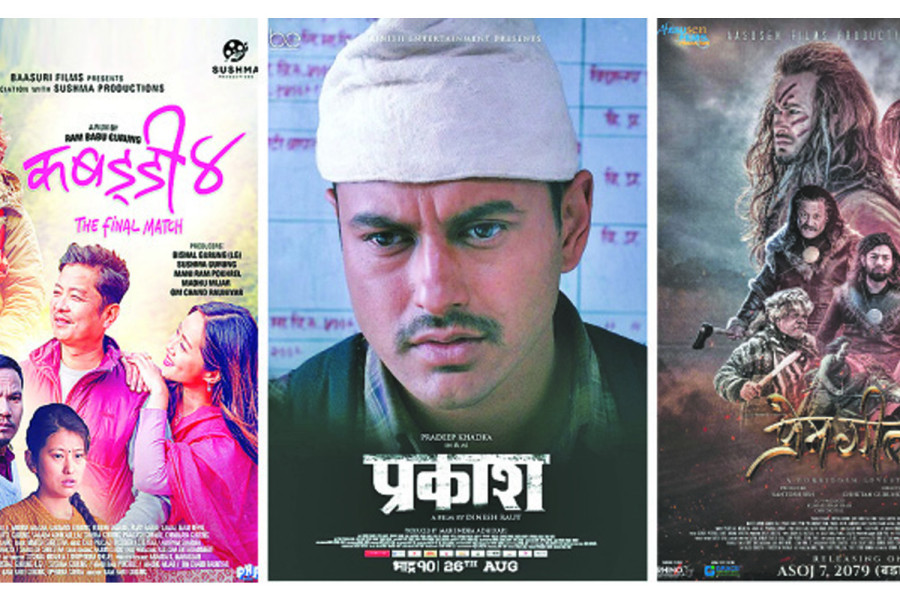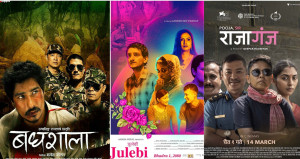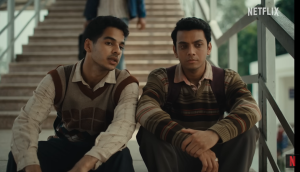Movies
What I learnt watching Nepali movies for five years
I will happily watch an average Nepali film in a theatre over an average but much-hyped international release.
Prashanna Mali
If someone had told me in early 2018 that I would be watching over 100 Nepali films on the big screen in the following five years, I would have said, “No Chance!” The truth is that I hadn’t even watched 50 Nepali films at the time. But I did feel the need to watch the work coming from the country as I was studying filmmaking and pursuing a career. I had already watched contemporary classics like ‘Pashupati Prasad’, ‘Loot’, or ‘Kagbeni’, but hadn’t yet discovered the brilliant ‘Numafung’ or seen the political thriller ‘Badhsala’.
Understanding the medium and experiencing world cinema was great, but I needed to know my country’s cinema. This curiosity led me to start a film-reviewing show on my previous radio station. January 2018 is when my co-host Eliz and I started the programme, and the idea was to watch the latest released flicks and discuss them critically and analytically. Initially, we talked about both national and international releases, but then we started focusing exclusively on Nepali movies. Not being familiar with the semiotics of mainstream Nepali movies, I couldn't connect with some of the early movies we watched. We shared our honest takes on what we watched. We began by watching films more subjectively than objectively as we both wanted to share our personal thoughts and have a casual debate which would make a good radio show.
The biggest realisation while watching Nepali movies was how different mainstream cinema catered to its particular audience. I started watching most of what you would call “mass entertainers” in the theatre where its hardcore viewers would be present. Watching the Chakka Panja series in a single-screen theatre during Dashain has a completely different feel than watching it in a fancy multiplex or on YouTube a couple of years later.
In a theatre, the audience flows with the film more freely, the jokes land, emotional scenes hit harder without coming across as being melodramatic, and the pauses left for audiences to cheer and clap feel much more fulfilling. What seems like passé still works on the big screen.
The more I watched Nepali films, the subjectivity of viewing these movies changed into more of an objective experience. With time, it became clear to me that those critics who would be watching certain films (mostly on premier shows) without understanding how it is minutely presenting themselves to their intended viewers were missing the point.
I started appreciating artists in Nepali movies more and began feeling the crew’s hard work. This newly gained viewpoint did not make me lose my love for innovative and artistic works, but it made me realise that both could co-exist, help each other, and, more importantly, enable the industry to foster. There was no black and white. The movies I loved watching personally still were the off-beat ones like “Hari”, ‘Chiso Maanche’, ‘Bulbul’, and ‘Aama’, but I wouldn’t have probably appreciated films like ‘Blind Rocks’, ‘Maruni’, ‘Ghar’ or ‘Gaja Baja’ if I hadn’t developed this viewpoint by going every weekend to the movies and seeing and feeling how people were moved scene by scene.
One of the remarkable changes that the Nepali film industry witnessed after the pandemic struck is the rise of off-beat movies like ‘Dokh’, ‘Paani Photo’, ‘Chiso Maanche’, ‘The Secrets of Radha’, etc. These films told stories of the common people, but they didn’t do well at the box office. Many blamed the audiences for not being ‘cinema literates’ or blamed the theatres for not giving the movies more screens and instead prioritising South Indian movies. However, the immense success of films like ‘Kabaddi 4’, ‘Prem Geet 3’ and ‘Mahapurush’ have made it evident that today’s audience is seeking escapism more than ever. Filmmakers need to consider that shift and, at the same time, continue to push the audiences’ cinematic language a step further.
I feel more optimistic about the industry than I was five years ago. There was a time when I had this preconceived notion that even the best Nepali films wouldn’t match the experience of watching the worst Hollywood movies. But now I will happily watch an average Nepali film in a theatre over an average much-hyped international release.
After the pandemic, I left the radio station, but I continue to review movies every week and post them on YouTube. I have enjoyed the act of talking about Nepali movies and trying to interpret them. Discussing Nepali cinema and the growth of cinema-viewing culture is vital if the industry is to grow. The so-called artistic filmmakers and so-called commercial filmmakers should find a middle path and create movies that the Nepali audience can be proud of and, at the same time, perform well in the small domestic market. The day this union truly happens is when Nepali cinema will flourish.




 9.12°C Kathmandu
9.12°C Kathmandu














